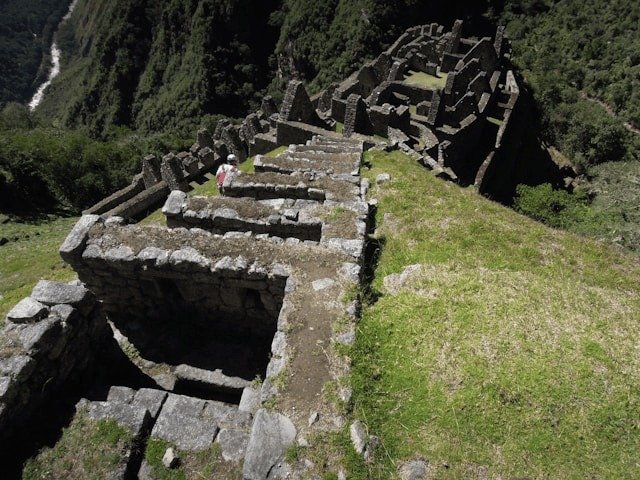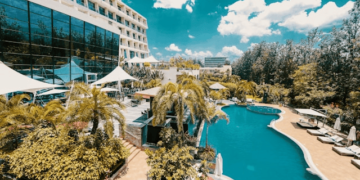Few adventures in the world rival the magic of hiking the Inca Trail to Machu Picchu. This legendary trek through the Peruvian Andes takes you along ancient stone paths built by the Inca civilization, past breathtaking mountain landscapes, and directly to the majestic Sun Gate overlooking Machu Picchu. Whether you’re an experienced hiker or a first-time adventurer, knowing how to prepare for this journey is key to making it a safe, rewarding, and unforgettable experience.
Here’s everything you need to know about hiking the Inca Trail from permits and packing lists to fitness tips and what to expect along the way.
Understanding the Inca Trail
The Inca Trail is a network of ancient roads that once connected the vast Inca Empire. Today, hikers can choose from several trekking options:
-
Classic Inca Trail (4 days, 3 nights): The most popular route, covering about 26 miles with varied terrain and high-altitude passes.
-
Short Inca Trail (2 days, 1 night): A condensed version ideal for those short on time but still wanting to experience the magic of the trail.
-
Alternative treks: Routes like the Salkantay Trek and Lares Trek offer equally scenic adventures with fewer crowds.
The trail passes through cloud forests, alpine tundra, and ancient ruins, culminating at Machu Picchu. It’s not just a hike it’s a journey through time and nature.
Permits and Booking
One of the most important things to know about the Inca Trail is that permits are required and must be booked months in advance. Only a limited number of people are allowed on the trail each day (500, including guides and porters), making early planning essential.
Permits can only be obtained through licensed tour operators, so choose a reputable company with experienced guides. These operators usually handle permits, meals, porters, and gear.
If the Classic Inca Trail is fully booked, consider hiking the Short Inca Trail or choosing an alternative trek to Machu Picchu.
Best Time to Hike the Inca Trail
Choosing the best time to hike the Inca Trail depends on weather and crowd preferences:
-
Dry season (May to September): The most popular time due to clear skies and comfortable temperatures. Trails are busiest during June, July, and August.
-
Wet season (November to March): Fewer hikers, lush greenery, and cheaper tour rates, but with a higher chance of rain and slippery trails.
-
Trail closure: The trail is closed every February for maintenance.
For ideal conditions, aim for April, May, or September, shoulder months with moderate weather and fewer crowds.
Physical Preparation and Fitness Tips
The Inca Trail is a moderately difficult trek with high-altitude sections, steep inclines, and uneven terrain. Being physically prepared is crucial.
Fitness tips for hiking the Inca Trail:
-
Start training at least two months before your trip with cardio, hiking, and strength exercises.
-
Practice hikes with a loaded backpack.
-
Incorporate leg and core strengthening routines.
-
Acclimate to altitude by arriving in Cusco a few days early to prevent altitude sickness.
Even seasoned hikers can be affected by the altitude, so listen to your body and pace yourself.
Inca Trail Packing List
Packing light yet smart is key for a successful hike. Here’s a basic Inca Trail packing list:
Essentials:
-
Sturdy hiking boots (broken in before the trip)
-
Comfortable, moisture-wicking clothing layers
-
Rain jacket or poncho
-
Hat, gloves, and thermal wear (nights are cold)
-
Small daypack with hydration system
-
Headlamp with extra batteries
-
Personal toiletries and sunscreen
-
Trekking poles (recommended for downhill sections)
Extras:
-
Water purification tablets or filter bottle
-
Snacks (nuts, protein bars, candy)
-
Quick-dry towel
-
Extra socks and underwear
-
Zip-lock bags for electronics or wet items
Tour operators typically provide tents, sleeping pads, and meals. You may also rent a sleeping bag or bring your own.
What to Expect on the Trail
Daily Itinerary Highlights:
-
Day 1: Easy start with a gradual incline and the first Inca ruins.
-
Day 2: The most challenging day, with a climb to Dead Woman’s Pass (4,215m).
-
Day 3: Longest day, with beautiful scenery and several archaeological sites.
-
Day 4: Early start and hike to Inti Punku (Sun Gate)—your first breathtaking view of Machu Picchu.
Expect a mix of stone steps, rugged trails, and jungle paths. Wildlife sightings may include hummingbirds, llamas, and orchids.
Guides offer insights into the region’s history and culture, enhancing your appreciation of the journey.
Food, Water, and Accommodation
One of the perks of going with a tour operator is the excellent food and logistical support. You’ll enjoy freshly prepared meals, tea time, and plenty of carbs to keep you energized.
Water is provided daily, but it’s still wise to bring purification tablets or a filter bottle.
Accommodation is in tents set up at designated campsites. Porters carry group gear, but you’ll carry your own daypack with essentials.
Arrival at Machu Picchu
Nothing compares to the moment you reach the Sun Gate (Inti Punku) and catch your first glimpse of Machu Picchu at sunrise. It’s a moment of triumph, awe, and reward.
Once you descend to the ruins, your guide will provide a tour of Machu Picchu’s most iconic landmarks like the Temple of the Sun and the Intihuatana stone.
Don’t forget:
-
Your passport (required for entry)
-
Pre-booked Machu Picchu ticket
-
Optional hike to Huayna Picchu or Machu Picchu Mountain (booked in advance)
Sustainable Hiking and Cultural Respect
Help preserve this sacred trail by following Leave No Trace principles:
-
Pack out all trash
-
Stick to marked trails
-
Use biodegradable products
-
Avoid disturbing wildlife or ancient structures
Respect local customs, support indigenous porters with ethical tour choices, and immerse yourself in the rich Quechua culture.
Conclusion
Hiking the Inca Trail to Machu Picchu is a life-changing experience that combines natural beauty, ancient history, and physical challenge. With proper planning, fitness, and respect for the environment, it can become one of the most meaningful adventures of your life.









